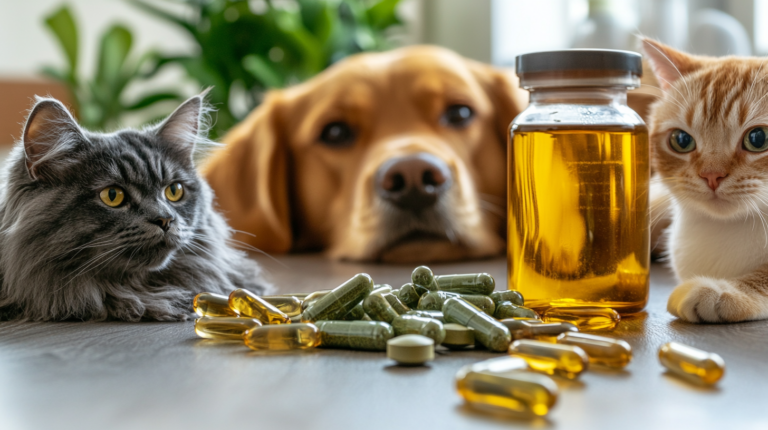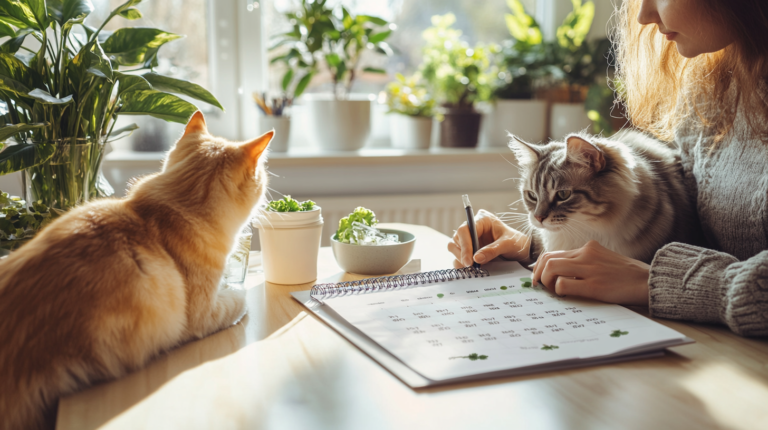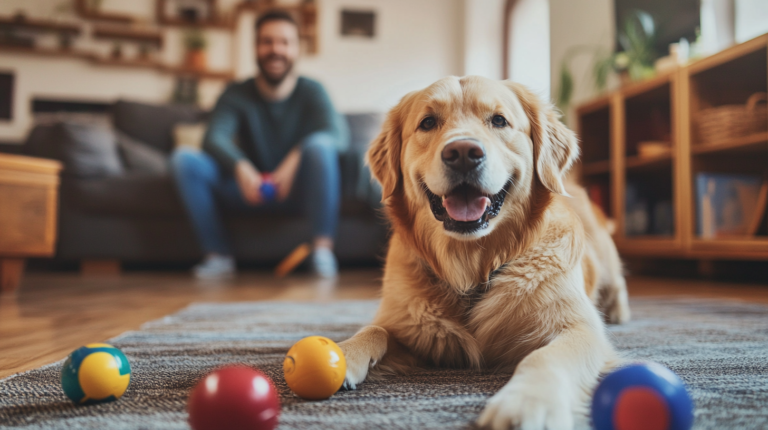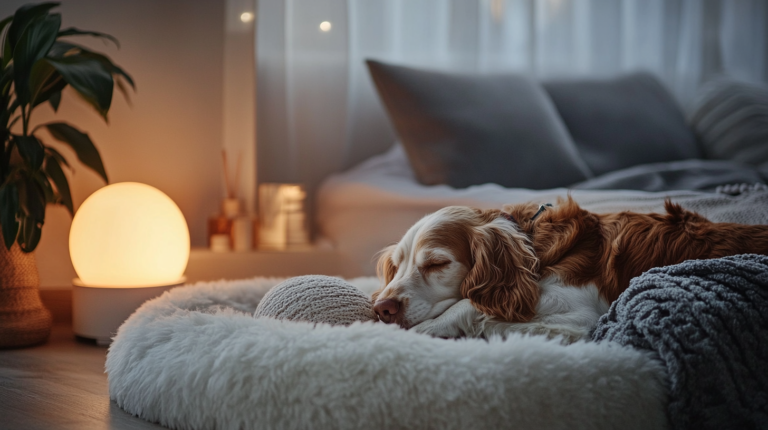Discover the top 5 pet anxiety products that veterinarians recommend for stressed dogs and cats. Our comprehensive guide helps you choose effective solutions for your pet’s specific anxiety type.
Table of Contents
Introduction: Understanding Pet Anxiety and Finding Relief
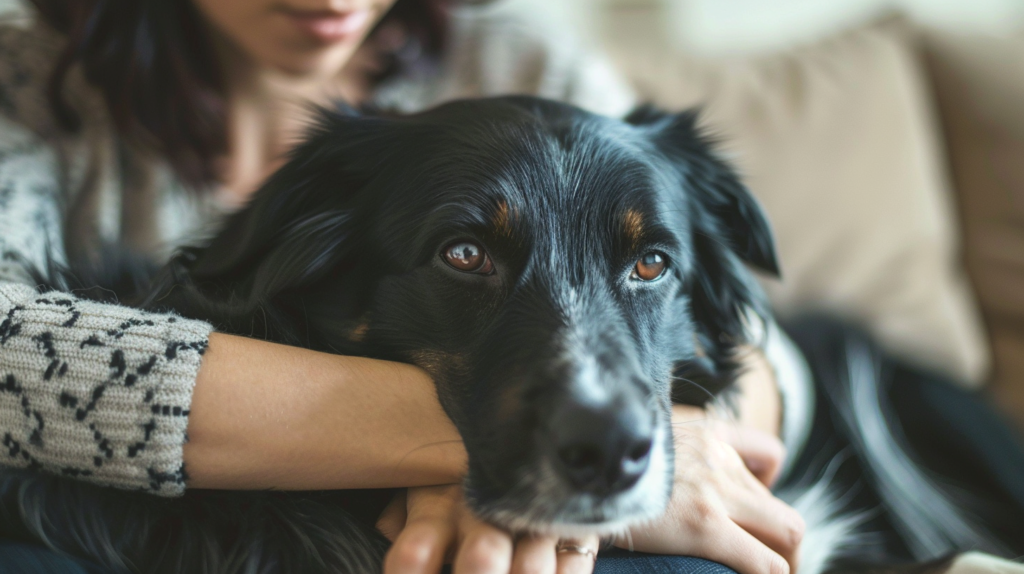
Does your furry friend hide during thunderstorms? Do they transform into a trembling mess when you grab your car keys? If so, you’re likely dealing with pet anxiety—a common yet distressing condition affecting millions of pets worldwide. Pet anxiety products have emerged as valuable tools for pet parents seeking to ease their companions’ stress without relying solely on medication.
According to the American Veterinary Medical Association, approximately 20-40% of dogs experience some form of anxiety disorder, while cats often suffer silently with behavioral signs that go unrecognized. These statistics highlight the critical need for effective pet anxiety products and solutions that address the root causes of stress in our animal companions.
At BlithePet, we understand the heartbreak of watching your beloved pet suffer from anxiety. That’s why we’ve thoroughly researched and tested the most effective pet anxiety products on the market to bring you this comprehensive guide. Whether your pet experiences separation anxiety, noise phobias, travel stress, or general nervousness, this article will help you find the perfect solution to restore calm and happiness to your pet’s life.
What Causes Anxiety in Pets?

Before exploring the top pet anxiety products, it’s essential to understand what triggers stress in our furry companions. Anxiety in pets can stem from various sources:
Separation Anxiety
Many pets, especially dogs, experience significant distress when separated from their owners. According to a study published in the Journal of Veterinary Behavior, separation anxiety affects up to 30% of dogs, manifesting through destructive behavior, excessive vocalization, inappropriate elimination, and self-harm.
Dr. Lisa Radosta, board-certified veterinary behaviorist, explains: “Separation anxiety is essentially a panic attack that occurs when a pet is separated from their attachment figure. The pet isn’t misbehaving—they’re genuinely terrified.”
Noise Phobias
Thunderstorms, fireworks, construction noise, and even household appliances can trigger intense fear responses in sensitive pets. The British Veterinary Association reports that over 40% of dogs show signs of noise phobia during fireworks season.
Travel Anxiety
For many pets, car rides, airline travel, or even short trips to the veterinarian can induce significant anxiety. Signs include drooling, vomiting, persistent vocalization, and physical tension.
Social Anxiety
Some pets experience anxiety in social situations, whether with other animals or unfamiliar humans. This often stems from inadequate socialization during developmental periods or past traumatic experiences.
Age-Related Anxiety
Senior pets commonly develop cognitive dysfunction syndrome (similar to dementia in humans), which can increase general anxiety and disorientation.
Environmental Changes
Moving homes, introducing new family members (human or animal), or altering routines can disrupt a pet’s sense of security and trigger anxiety.
Signs Your Pet May Be Suffering from Anxiety
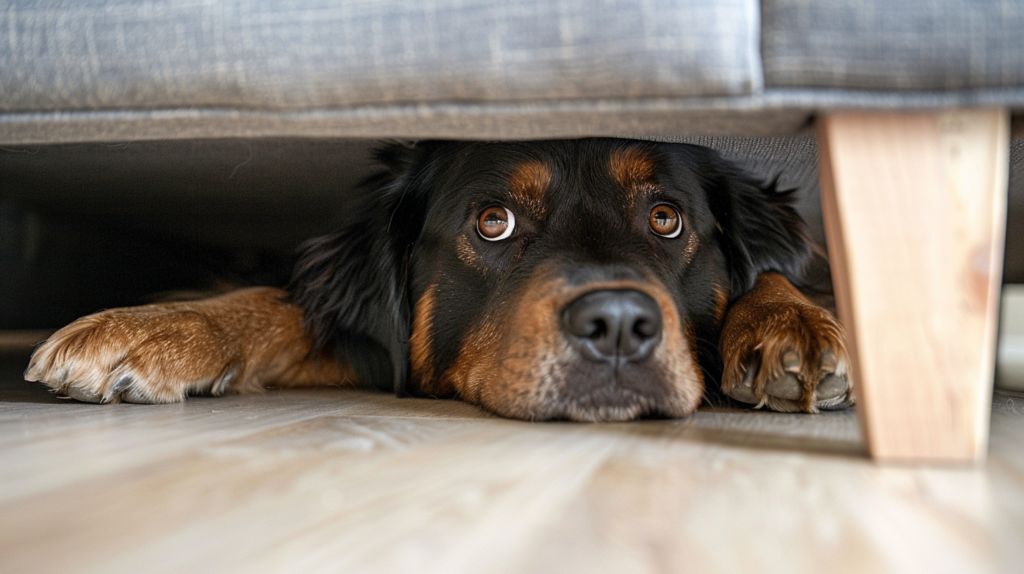
Recognizing anxiety symptoms early allows for prompt intervention. Here are common indicators your pet might be experiencing anxiety:
In Dogs:
- Excessive barking, whining, or howling
- Destructive behavior (chewing furniture, digging, destroying household items)
- Inappropriate urination or defecation despite being house-trained
- Pacing, restlessness, or inability to settle
- Excessive drooling or panting not related to physical exertion
- Escaping or attempting to escape
- Self-destructive behaviors (excessive licking, chewing on paws/tail)
- Reduced appetite or refusal to eat
- Aggression when normally docile
In Cats:
- Excessive grooming leading to hair loss or skin irritation
- Inappropriate elimination outside the litter box
- Excessive vocalization
- Hiding or withdrawal from social interaction
- Reduced appetite
- Increased aggression or fearfulness
- Hypervigilance or startling easily
- Changes in normal routines or behaviors
A 2023 survey by the American Pet Products Association found that 65% of pet owners reported observing at least one anxiety symptom in their pets, yet only 25% sought professional help or tried anxiety-reducing products. This disconnect highlights the need for greater awareness about pet anxiety products and their potential benefits.
Top 5 Pet Anxiety Products Worth Trying
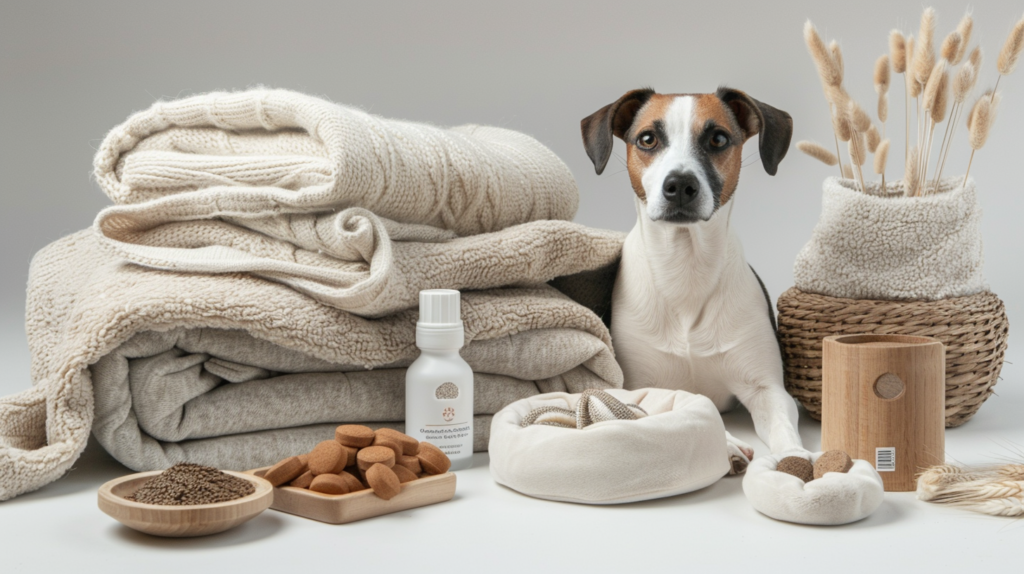
After extensive research and consultation with veterinary professionals, we’ve compiled a list of the five most effective pet anxiety products currently available. Each product addresses different aspects of anxiety and may work better for specific triggers or pet personalities.
1. Pressure Wraps and Anxiety Vests
How They Work: Pressure wraps like the ThunderShirt apply gentle, constant pressure to a pet’s torso, similar to swaddling an infant. This pressure activates the parasympathetic nervous system, releasing calming hormones and creating a sensation similar to being held or hugged.
Best For:
- Thunder and firework phobias
- General anxiety and nervousness
- Travel anxiety
- Separation anxiety (as part of a comprehensive treatment plan)
- Veterinary visit stress
Effectiveness: Clinical studies show that pressure wraps can reduce anxiety symptoms in approximately 80% of dogs, with about 50% showing significant improvement. A 2022 study published in the Journal of Veterinary Behavior found that dogs wearing pressure wraps during thunderstorms showed lower heart rates and fewer stress behaviors compared to the control group.
Dr. Emily Wilson, DVM, notes: Pressure wraps work on the same principle as weighted blankets for humans. They provide proprioceptive input that can help calm an overactive nervous system.
Expert Tips:
- Introduce the wrap during calm periods, not during anxiety-provoking events
- Use positive reinforcement when putting it on
- Follow sizing guidelines carefully—too loose won’t provide benefits, too tight may cause discomfort
- Don’t leave on for more than 8-10 hours continuously
- Consider combining with other anxiety management techniques for maximum effect
Our Top Pick: ThunderShirt Classic Anxiety Vest With over 80% success rate reported by users and a design refined over years of research, the ThunderShirt remains the gold standard in pressure therapy for pets.
2. Pheromone Diffusers and Sprays
How They Work: These products mimic natural calming pheromones that mother dogs and cats release to soothe their puppies and kittens. The synthetic versions are species-specific:
- For dogs: Dog Appeasing Pheromone (DAP)
- For cats: Feline Facial Pheromone (FFP)
When diffused into the environment or applied to objects, these pheromones create a sense of security and familiarity.
Best For:
- Environmental anxiety
- Moving to new homes
- Multi-pet households with tension
- Fostering or newly adopted pets
- Hospitalization recovery
- Separation anxiety
Effectiveness: Research published in Applied Animal Behaviour Science indicates that pheromone products can reduce anxiety behaviors by 70-90% in appropriate situations. They’re particularly effective for environmental stressors but may be less helpful for severe phobias.
Expert Tips:
- Place diffusers in rooms where your pet spends the most time
- Replace refills as recommended (usually every 30 days)
- For travel, use the spray version on bedding or carriers
- Allow 1-2 weeks of continuous use to see full benefits
- Cover the recommended square footage (usually one diffuser per 500-700 sq ft)
Our Top Picks:
- For Dogs: Adaptil Diffuser Kit
- For Cats: Feliway Classic Diffuser
Veterinary behaviorist Dr. Karen Overall states: “Pheromone products provide an excellent foundation for anxiety management with virtually no side effects or risks, making them ideal for long-term use.”
3. Calming Supplements and Treats
How They Work: These products contain natural ingredients that promote relaxation through various pathways in the brain and body. Common active ingredients include:
- L-Theanine: An amino acid found in green tea that increases dopamine and GABA production
- L-Tryptophan: Converts to serotonin in the brain, promoting relaxation
- Colostrum Calming Complex: Bioactive proteins that support stress reduction
- Thiamine (B1): Supports proper nervous system function
- Chamomile: Contains apigenin that binds to benzodiazepine receptors in the brain
- Valerian Root: Increases GABA levels, producing a sedative effect
- CBD Oil: Works with the endocannabinoid system to reduce stress responses
Best For:
- Mild to moderate anxiety
- Situational anxiety (when given 30-90 minutes before stressful events)
- Complementary treatment alongside behavioral modification
- Pets who cannot tolerate more physical interventions
- Daily management of chronic anxiety
Effectiveness: Clinical trials show varying effectiveness rates depending on the specific formula and individual pet. Generally, calming supplements reduce anxiety behaviors in 60-75% of pets, though results may take 2-4 weeks of consistent use for maximum benefit.
A placebo-controlled study at The Ohio State University College of Veterinary Medicine found that dogs receiving a supplement containing L-theanine, L-tryptophan, and a milk protein hydrolysate showed significantly reduced anxiety behaviors compared to the control group.
Expert Tips:
- Start with the lowest recommended dose and increase if needed
- For scheduled stressful events, begin supplementation several days in advance
- Consult your veterinarian before using if your pet takes other medications
- Choose products with third-party testing for quality assurance
- Be patient—natural supplements typically work gradually rather than immediately
Our Top Picks:
- Zesty Paws Calming Bites: Contains multiple active ingredients and comes in palatable treat form
- VetriScience Composure Pro: Clinically tested formula with L-theanine and colostrum calming complex
- ElleVet CBD+CBDA: Premium hemp-derived CBD specifically formulated for pets
Dr. Gary Richter, veterinary medical director at Holistic Veterinary Care, explains: “Natural calming supplements can provide meaningful anxiety relief without the side effects of prescription medications. They’re particularly valuable for long-term anxiety management or mild cases where pharmaceutical intervention isn’t warranted.”
4. Anxiety-Reducing Toys and Puzzles
How They Work: These products use mental stimulation, physical activity, or specific sensory experiences to redirect anxious energy and trigger calming neurological responses. They fall into several categories:
- Puzzle Toys: Require problem-solving to access treats, engaging the brain’s reward centers
- Lick Mats: Promote repetitive licking that releases endorphins
- Heartbeat Simulators: Plush toys with artificial heartbeats that mimic the comfort of littermates
- Snuffle Mats: Encourage natural foraging behaviors that focus attention away from stressors
- Long-lasting Chews: Provide extended chewing opportunities that release stress-reducing hormones
Best For:
- Separation anxiety (providing distraction during departures)
- Redirecting destructive behaviors
- Excessive energy that manifests as anxiety
- Boredom-related stress
- Creating positive associations with previously stressful situations
Effectiveness: Behavioral studies show that appropriate enrichment toys can reduce anxiety behaviors by 50-70% in many pets. Their effectiveness depends largely on the individual pet’s interests and anxiety triggers.
Expert Tips:
- Rotate toys regularly to maintain interest
- Reserve special anxiety toys for stressful situations only
- Consider using puzzle toys in conjunction with departure training
- Monitor for destructive chewing or ingestion of toy parts
- Match the toy’s difficulty level to your pet’s problem-solving abilities
Our Top Picks:
- SmartPetLove Snuggle Puppy: Features a heartbeat simulator and heat pack
- Kong Classic: Can be filled with frozen treats for extended engagement
- Lickimat Classics: Promotes calming through repetitive licking
- Nina Ottosson Puzzle Toys: Various difficulty levels for mental stimulation
Animal behaviorist Dr. Sophie Yin (posthumously quoted from her published work) emphasized: “Environmental enrichment is a critical component of anxiety management. The right toys don’t just distract—they engage natural behaviors that have inherent calming properties.”
5. Calming Music and Sound Machines
How They Work: These products use auditory stimulation specifically designed to trigger relaxation responses in the nervous system. They typically feature:
- Simplified classical music with reduced dynamic ranges
- Nature sounds with consistent, predictable patterns
- White noise that masks triggering sounds
- Specific frequency patterns shown to induce relaxation in animals
Best For:
- Noise phobias (by masking triggering sounds)
- Creating environmental consistency
- Separation anxiety (providing comforting background noise)
- General environmental stress
- Sleep disturbances
Effectiveness: Research from the Scottish SPCA and University of Glasgow found that dogs exposed to certain classical music showed a 46% decrease in stress behaviors. Another study in the Journal of Feline Medicine and Surgery demonstrated that cats undergoing medical procedures showed lower stress scores when exposed to specially designed feline music compared to classical music or silence.
Expert Tips:
- Begin playing at low volume during calm periods
- Create consistent sound environments by using the same tracks regularly
- Place speakers at pet level rather than human ear height
- Use in conjunction with counter-conditioning for noise phobias
- Consider portable options for travel anxiety
Our Top Picks:
- Through a Dog’s Ear: Music specifically composed based on canine hearing research
- Pet Acoustics: Species-specific music for different pets
- RelaxMyDog/RelaxMyCat: YouTube channels and apps with hours of calming content
- Dogcalm Radio: Free online radio designed for anxious dogs
Dr. Susan Wagner, veterinary neurologist and author of “Through a Dog’s Ear,” explains: “The mammalian nervous system responds automatically to certain sound patterns. By simplifying music and emphasizing specific tonal qualities, we can help guide pets’ nervous systems toward relaxation.”
How to Choose the Right Pet Anxiety Product
With numerous options available, selecting the most appropriate pet anxiety products requires careful consideration of your pet’s specific needs. Here’s a step-by-step approach:
1. Identify Your Pet’s Anxiety Type
First, determine what kind of anxiety your pet experiences:
| Anxiety Type | Common Signs | Recommended Product Categories |
| Separation Anxiety | Destruction when alone, vocalization, house soiling | Pressure wraps, pheromones, puzzle toys |
| Noise Phobia | Trembling, hiding, panting during loud noises | Sound machines, pressure wraps, calming supplements |
| Travel Anxiety | Drooling, vomiting, restlessness in vehicles | Portable pheromones, pressure wraps, supplements |
| Social Anxiety | Fear around other animals or people | Supplements, pressure wraps, environmental management |
| Generalized Anxiety | Persistent nervousness without clear triggers | Pheromones, supplements, consistent environmental enrichment |
2. Consider Your Pet’s Personality and Preferences
- Touch-sensitive pets may resist pressure wraps
- Food-motivated animals often respond well to treat-based solutions
- Sound-sensitive pets might benefit from—or be further stressed by—sound machines
- Highly active pets may need solutions that incorporate physical activity
3. Evaluate Practical Considerations
- Budget: Some solutions require ongoing purchases (supplements, pheromone refills)
- Lifestyle: Will you be consistent with daily supplements or treatments?
- Home environment: Do you have space for diffusers or sound machines?
- Multiple pets: Will the solution work for all pets in the household?
4. Consult Your Veterinarian
Before investing in pet anxiety products, especially supplements or long-term treatments, consult your veterinarian to:
- Rule out medical causes for anxiety-like behaviors
- Discuss potential interactions with medications
- Get personalized recommendations based on your pet’s health history
- Determine if prescription anxiety medication might be necessary
5. Start with a Single Approach
Rather than implementing multiple solutions simultaneously, start with one product and monitor results for 2-3 weeks. This approach allows you to clearly identify what works and what doesn’t.
Combining Products for Maximum Effect
For pets with severe or multiple types of anxiety, combining different product categories often yields the best results. Here are effective combinations for common scenarios:
For Separation Anxiety:
- Pheromone diffuser (ongoing)
- Pressure wrap (during departures)
- Puzzle toy with high-value treats (given at departure)
- Calming music left playing
For Thunderstorm Phobia:
- Pressure wrap
- Calming supplements (given 1-2 hours before storm)
- Sound machine to mask thunder
- Safe “den” area with pheromone spray
For Veterinary Visit Anxiety:
- Calming supplements (pre-visit)
- Portable pheromone spray on carrier/bedding
- Pressure wrap during visit
- Lick mat with frozen treat during examination
Dr. Leslie Sinn, board-certified veterinary behaviorist, advises: “The most successful anxiety management protocols typically employ multiple modalities addressing different physiological and psychological aspects of the stress response. Think of it as a toolkit rather than searching for a single solution.”
Beyond Products: Complementary Anxiety Management Techniques
While pet anxiety products provide valuable tools, they work best when incorporated into a holistic approach to anxiety management.
Behavior Modification
Consider these proven training approaches:
- Desensitization: Gradually exposing your pet to anxiety triggers at an intensity that doesn’t provoke fear
- Counter-conditioning: Creating positive associations with previously frightening stimuli
- Relaxation training: Teaching your pet to remain calm on cue
Environmental Management
Simple changes to your pet’s environment can significantly reduce anxiety:
- Creating safe spaces with limited sensory input
- Establishing consistent daily routines
- Using visual barriers to reduce territorial stress
- Providing appropriate exercise and mental stimulation
Professional Support
For severe anxiety cases, consider working with:
- Certified animal behaviorists
- Veterinary behaviorists
- Professional trainers specializing in anxiety
A survey by the American College of Veterinary Behaviorists found that pets receiving combined product and behavioral therapy showed 40% greater improvement than those using products alone.
Case Studies: Real Success Stories with Pet Anxiety Products
Case Study 1: Max the Thunderphobic Lab
Max, a 7-year-old Labrador Retriever, would panic during thunderstorms, panting heavily and destroying furniture. His owner, Sarah, implemented a multi-modal approach:
- ThunderShirt applied 30 minutes before storms
- Calming supplements given daily during storm season
- White noise machine to mask thunder sounds
- Safe space created in interior bathroom with no windows
After six weeks, Max showed 80% reduction in anxiety behaviors and could sleep through moderate storms with minimal support.
Case Study 2: Luna the Separation-Anxious Cat
Luna, a 3-year-old rescue cat, would vocalize continuously and urinate outside her litter box whenever her owner left for work. Her management plan included:
- Feliway diffuser in the main living area
- Puzzle feeder provided at departure times
- Calming music played through a pet-specific streaming service
- Gradual departure training
Within three months, Luna showed complete resolution of inappropriate elimination and significantly reduced vocalization.
Case Study 3: Buddy the Veterinary-Phobic Terrier
Buddy, a 5-year-old Jack Russell Terrier, would become aggressive during veterinary visits, making examination nearly impossible. His solution included:
- Daily L-theanine supplements
- Adaptil collar worn for three days before appointments
- Lick mat with frozen peanut butter during examinations
- Pressure wrap worn during the visit
Buddy now tolerates basic examinations with minimal restraint, though his management plan continues.
Common Mistakes to Avoid When Using Pet Anxiety Products
1. Using Products Reactively Instead of Proactively
Many pet owners wait until their pet is already experiencing peak anxiety before implementing solutions. Most products work best when:
- Started during calm periods
- Used consistently over time
- Implemented before anxiety escalates
2. Insufficient Duration of Use
Natural supplements and pheromone products often require consistent use for 2-4 weeks before maximum benefits are seen. Many pet owners abandon potentially effective solutions prematurely.
3. Improper Product Application
- Pressure wraps applied too loosely provide minimal benefit
- Pheromone diffusers placed in areas with strong airflow reduce effectiveness
- Supplements given inconsistently yield unpredictable results
4. Expecting Complete Resolution from Products Alone
Pet anxiety products are tools, not magic solutions. They work best as part of a comprehensive plan that includes:
- Behavioral modification
- Environmental management
- Veterinary support when needed
5. Not Addressing Underlying Medical Issues
Anxiety can sometimes result from or be exacerbated by medical conditions such as:
- Pain
- Thyroid disorders
- Neurological conditions
- Sensory decline
- Cognitive dysfunction
Always rule out medical causes before focusing solely on behavioral interventions.
When to Consult a Veterinarian About Pet Anxiety
While many mild to moderate anxiety cases respond well to over-the-counter products, certain situations warrant professional veterinary intervention:
Seek Immediate Veterinary Help If:
- Your pet is injuring themselves due to anxiety
- Anxiety prevents eating or drinking for more than 24 hours
- Your pet shows sudden onset of severe anxiety without obvious triggers
- Anxiety behaviors escalate despite appropriate interventions
- Your pet becomes aggressive when anxious
Consider Scheduled Veterinary Consultation When:
- Anxiety persists for more than 4-6 weeks despite using appropriate products
- Anxiety significantly impacts quality of life for pet or household
- Multiple types of anxiety manifest simultaneously
- You’re unsure whether symptoms indicate anxiety or another condition
- Over-the-counter solutions provide only minimal relief
Dr. Christopher Pachel, board-certified veterinary behaviorist, emphasizes: “There’s no shame in needing prescription medication for a pet with severe anxiety. Just as we wouldn’t expect a person with clinical anxiety to manage with lifestyle changes alone, some pets genuinely need pharmacological support alongside behavioral approaches.”
Cost Comparison: Pet Anxiety Products Worth the Investment
When evaluating the cost-effectiveness of pet anxiety products, consider both initial investment and long-term expenses:
| Product Category | Initial Cost | Ongoing Cost | Typical Duration | Cost-Benefit Consideration |
| Pressure Wraps | $40-60 | None (unless replacement needed) | 3-5 years | High initial cost but excellent long-term value |
| Pheromone Diffusers | $25-45 | $15-25/month for refills | Continuous as needed | Moderate ongoing expense but non-invasive solution |
| Calming Supplements | $20-50 | $20-50/month | Continuous as needed | Moderate cost with variable effectiveness |
| Anxiety Toys | $15-40 | Occasional replacement | 6 months – 2 years | Good value, especially for boredom-related anxiety |
| Sound Machines | $30-70 | None (unless subscription-based) | 3-5 years | Excellent value for noise-sensitive pets |
Cost-Saving Tips:
- Subscribe to autoship options for supplements (typically 5-15% savings)
- Purchase multi-packs of pheromone refills
- Invest in durable, high-quality versions of products that receive daily use
- Consider purchasing used pressure garments (washable before use)
A 2023 pet owner survey found that respondents spent an average of $225 annually on anxiety management for their pets, with 85% reporting the investment was “worth every penny” for the improvement in their pet’s quality of life.
Frequently Asked Questions About Pet Anxiety Products
How quickly can I expect to see results from pet anxiety products?
Answer: Timeframes vary significantly depending on the product type and individual pet. Pressure wraps often show immediate effects, while supplements may take 2-4 weeks of consistent use. Pheromone products typically begin working within 24-48 hours but may require 1-2 weeks for maximum benefit. For any anxiety solution, consistency is key—intermittent use reduces effectiveness.
Can I use multiple pet anxiety products simultaneously?
Answer: Yes, many veterinary behaviorists recommend combining different product types for comprehensive anxiety management. Products utilizing different mechanisms (like a pressure wrap plus pheromones) often complement each other effectively. However, avoid combining multiple calming supplements without veterinary guidance, as ingredients may overlap or interact.
Are there any side effects I should watch for when using pet anxiety products?
Answer: Most over-the-counter pet anxiety products have excellent safety profiles with minimal side effects. Pressure wraps occasionally cause minor irritation in sensitive pets but rarely cause significant issues. Some calming supplements may cause mild sedation or digestive upset, particularly at first. If you notice any concerning changes in your pet’s behavior, appetite, or elimination habits after starting a new product, discontinue use and consult your veterinarian.
How do I know if my pet’s anxiety requires prescription medication rather than over-the-counter products?
Answer: Consider prescription options if your pet: 1) shows no improvement after trying multiple over-the-counter products correctly for sufficient time, 2) has anxiety so severe it prevents normal functioning or causes self-injury, 3) displays aggressive behavior when anxious, or 4) experiences anxiety that significantly impacts quality of life despite appropriate management. Your veterinarian can help determine whether prescription medications might be appropriate as either a temporary intervention during behavior modification or as a long-term solution.
Can pet anxiety products be used preventatively, or should they only be used when symptoms appear?
Answer: Many pet anxiety products work best when used preventatively before anxiety escalates. For predictable anxiety triggers (like thunderstorms or fireworks), starting interventions before the event yields better results. For chronic anxiety, consistent use often provides greater benefit than intermittent application. Think of anxiety management as ongoing wellness care rather than crisis intervention—although having quick-acting solutions like pressure wraps on hand for unexpected situations is also valuable.
Will my pet become dependent on anxiety products if I use them regularly?
Answer: Over-the-counter pet anxiety products do not create physical dependence or addiction. However, some pets may come to associate certain products (like pressure wraps) with the onset of stressful situations if only used during anxiety-provoking events. To prevent this association, occasionally use these products during positive or neutral experiences as well. The goal of any anxiety management plan should be gradually increasing your pet’s ability to cope independently, though some pets with chronic anxiety may need ongoing support.
Conclusion: Finding Peace for Your Anxious Pet
Living with an anxious pet presents unique challenges that impact both your furry friend’s wellbeing and your household harmony. The right pet anxiety products can transform this experience, providing relief for your pet and peace of mind for you.
Remember that anxiety management is rarely a one-size-fits-all solution. The journey to finding the perfect combination of products and techniques for your pet may require patience and experimentation. What works brilliantly for one animal may prove ineffective for another—and that’s perfectly normal.
As you explore the options we’ve presented, focus on your individual pet’s needs, preferences, and specific anxiety triggers. Begin with one approach, monitor results carefully, and adjust as needed. Don’t hesitate to consult professionals when uncertainty arises or if anxiety symptoms persist despite appropriate interventions.
Most importantly, approach the process with compassion—both for your pet and yourself. Anxiety is not a behavioral choice or the result of poor training; it’s a genuine neurological and emotional response that your pet cannot control without support.
With the right tools, consistent application, and a healthy dose of patience, you can help your anxious pet find comfort and confidence. The transformation from a fearful, stressed companion to a relaxed, happy pet is worth every ounce of effort.
Have a similar experience with your pet? Share it in the comments below!


